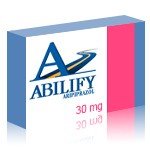Manic Phases of Bipolar Disorder


Bipolar disorder is a complex mental health condition characterized by extreme fluctuations in mood, energy, and activity levels. These shifts can range from deep depression to episodes of mania — periods of heightened mood and increased activity that can significantly impact daily life. While depression tends to draw more public attention because of its association with low energy and sadness, mania can be equally disruptive, sometimes leading to risky behaviors, impaired judgment, and interpersonal conflicts. Understanding the manic phases is critical for timely diagnosis, effective treatment, and improved quality of life.
Understanding the Manic Phase
In bipolar disorder, the manic phase is a distinct period during which a person experiences an abnormally elevated, expansive, or irritable mood. It is often accompanied by increased energy, a decreased need for sleep, rapid speech, racing thoughts, and a heightened sense of self-confidence or grandiosity. While some individuals may initially find these heightened states enjoyable — feeling more productive, creative, or socially engaged—the condition frequently escalates beyond control. The longer mania goes untreated, the greater the risk of harmful consequences, such as financial loss, damaged relationships, or physical danger.
Mania is more than simply being in a “good mood.” It is a clinically recognized state that typically lasts at least one week (or any duration if hospitalization is necessary) and causes noticeable impairment in social or occupational functioning. It can also include psychotic features, such as delusions or hallucinations, especially in more severe episodes.
What Does the Manic Phase Look Like?
To the outside observer, mania can appear as an intense burst of activity and enthusiasm. Individuals may speak more quickly than usual, jumping from one topic to another in a way that is hard to follow. They might start ambitious projects, take on multiple tasks simultaneously, or make impulsive decisions — such as spending large sums of money or engaging in risky sexual behaviors — without considering long-term consequences.
Sleep patterns often change dramatically. People in a manic phase may feel rested after just a couple of hours of sleep, or they may skip sleeping altogether for several days without feeling tired. This lack of rest further intensifies symptoms, leading to irritability, impatience, and even aggression when challenged.
Social interactions can also shift. Some people become more extroverted and sociable, seeking constant interaction, while others become easily agitated or argumentative. In severe mania, reality testing may be impaired, resulting in paranoia, disorganized thinking, or hallucinations.
The Four Stages of Mania
Clinicians and researchers sometimes describe mania as progressing through stages. Although experiences vary, recognizing these stages can help in early intervention:
- Hypomania This is the mildest form of elevated mood. People often feel energetic, optimistic, and unusually productive. Hypomania typically does not cause severe impairment, and some individuals may see it as a positive phase. However, it can escalate into more severe mania if not managed.
- Acute Mania Here, symptoms become more intense and disruptive. Energy levels are high, judgment is impaired, and risky behaviors become more frequent. Speech may be pressured, and the person may be difficult to interrupt. Irritability or euphoria can dominate, and relationships often become strained.
- Delirious Mania This is the most severe stage, often involving psychosis. Delusions of grandeur, paranoia, or hallucinations may occur. The person may be unable to function in daily life and may require hospitalization to ensure safety and stabilization.
- Recovery After the manic episode subsides — whether through treatment, natural resolution, or exhaustion — the individual enters a recovery phase. Energy and mood gradually stabilize, but there may be lingering consequences from actions taken during mania, such as financial difficulties or damaged relationships.
It is important to note that not all individuals experience these stages in the same order or with the same intensity. Some may remain in hypomania for extended periods, while others progress rapidly into acute or delirious mania.
The Different Phases of Bipolar Disorder
Bipolar disorder is not defined solely by mania. It is a cyclical condition involving multiple mood states, each with its own challenges:
- Mania As described, this is a period of abnormally elevated or irritable mood with high energy and activity levels.
- Hypomania A less intense form of mania, hypomania is often seen in bipolar II disorder. While it can increase productivity, it still carries risks due to impulsivity and poor judgment.
- Depression Episodes of depression in bipolar disorder are similar to major depressive disorder, involving low mood, fatigue, feelings of worthlessness, and possible suicidal thoughts.
- Mixed States These episodes involve symptoms of both depression and mania occurring simultaneously, such as high energy combined with deep sadness or agitation. Mixed states are particularly dangerous due to the increased risk of self-harm.
The transition between these phases is not always predictable. Some people cycle through moods rapidly, a pattern called “rapid cycling,” while others have long stretches of stability between episodes. Stress, sleep disruption, seasonal changes, and medication non-adherence can all trigger shifts.
Complications of Untreated Mania
Left untreated, manic episodes can have serious consequences. Financial instability is common due to impulsive spending or risky investments. Career setbacks may occur because of erratic behavior or conflicts at work. Relationships can suffer as friends and family struggle to understand the sudden changes in mood and behavior. In severe cases, legal trouble or physical harm may result from reckless actions.
Additionally, untreated mania increases the risk of future episodes. Each episode can make the brain more sensitive to mood fluctuations, leading to more frequent and intense cycles. This is why early detection and consistent treatment are essential.
Treatment Approaches for the Manic Phase
Treating mania usually requires a combination of medication, psychotherapy, and lifestyle adjustments. Hospitalization may be necessary in cases of severe mania or when there is a risk of harm.
Medications often include mood stabilizers, antipsychotics, and sometimes benzodiazepines for short-term agitation control. Psychotherapy, such as cognitive behavioral therapy (CBT), can help individuals recognize early warning signs and develop coping strategies. Lifestyle changes — such as maintaining a regular sleep schedule, reducing caffeine or alcohol intake, and practicing stress management — support long-term stability.
The Role of Abilify in Managing Mania
Abilify (generic name: aripiprazole) is an atypical antipsychotic commonly prescribed in the treatment of bipolar disorder, particularly for managing manic and mixed episodes. It works by modulating dopamine and serotonin activity in the brain, helping to balance mood and reduce symptoms of mania.
One of the key advantages of Abilify is its ability to control manic symptoms without causing excessive sedation in many patients. This can help individuals maintain daily functioning while reducing impulsive or risky behavior. Abilify can be used alone or in combination with mood stabilizers like lithium or valproic acid, depending on the severity and pattern of symptoms.
In acute mania, Abilify often helps to reduce hyperactivity, irritability, and rapid speech within days, though full stabilization may take longer. For maintenance therapy, it can help prevent future episodes, especially when combined with psychotherapy and lifestyle modifications.
Like all medications, Abilify has potential side effects, including restlessness, insomnia, and gastrointestinal discomfort. Rarely, it may cause more serious effects, such as changes in blood sugar or involuntary muscle movements. Therefore, treatment should be closely monitored by a healthcare provider, with regular check-ins to assess both effectiveness and tolerability.
The Importance of Ongoing Care
Bipolar disorder is a lifelong condition, but with the right combination of treatments, many individuals achieve long-term stability. Early recognition of symptoms — both by the individual and their support network — plays a crucial role in preventing full-blown episodes. This often involves keeping a mood diary, attending regular therapy sessions, and adhering to prescribed medication regimens.
Family education is also essential. Understanding that mania is not a matter of willpower but a medical condition can help reduce stigma and improve support. Loved ones can play a vital role in spotting early warning signs, encouraging treatment adherence, and providing emotional stability during recovery.
Outlook for People with Bipolar Disorder
With appropriate treatment, individuals with bipolar disorder can lead fulfilling lives. Mania, while potentially destructive, can be effectively managed through medication, therapy, and self-awareness. The goal is not to suppress all emotion but to achieve a balanced state in which mood changes are less extreme and less disruptive.
The role of medications like Abilify in this process cannot be overstated. By helping to control the chemical imbalances that contribute to mania, these treatments make it possible for many people to regain control over their lives. Combined with education, healthy routines, and strong support systems, they can significantly reduce the impact of manic phases and improve overall well-being.
Drug Description Sources: U.S. National Library of Medicine, Drugs.com, WebMD, Mayo Clinic, RxList.
Reviewed and Referenced By:
- Dr. Alan Carter, PharmD Clinical pharmacist specializing in psychiatric pharmacology and mood stabilizers. Frequently cited on Drugs.com for reviewing therapeutic guidance on medications such as aripiprazole (Abilify), lithium, and valproic acid, focusing on their pharmacokinetics, dosage, and safety in bipolar disorder management.
- Dr. Carol DerSarkissian, MD Board-certified in internal medicine, contributor to WebMD. Her clinical reviews emphasize the diagnosis and long-term management of bipolar disorder, with a focus on recognizing manic episodes and preventing recurrence.
- Dr. Dianne B. McKay, MD Professor of Clinical Pharmacology, contributor to RxList and NIH. Her medical insights address the metabolic and renal considerations of long-term psychotropic medication use, including antipsychotics prescribed for mania.
- Dr. William C. Shiel Jr., MD, FACP, FACR Chief Editor at MedicineNet, affiliated with WebMD. Authored comprehensive medical content on psychiatric medications, covering mechanisms of action, known side effects, and clinical best practices for treating bipolar mania.
- Dr. Steven Gans, MD Harvard-trained psychiatrist, frequent reviewer on Verywell Mind and WebMD. Provides expertise in mood disorders, particularly the recognition and treatment of manic and mixed episodes, as well as the clinical role of Abilify in stabilizing mood in bipolar disorder.
(Updated at Aug 12 / 2025)

